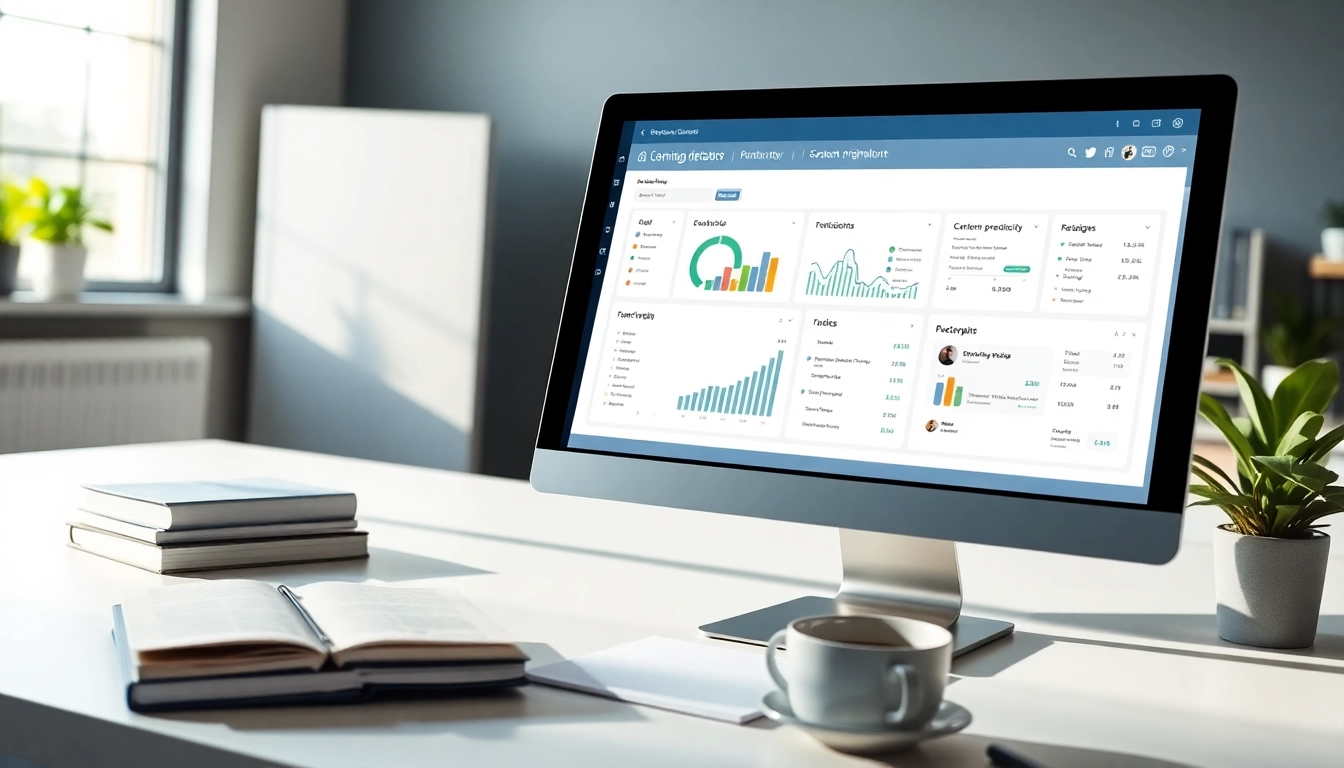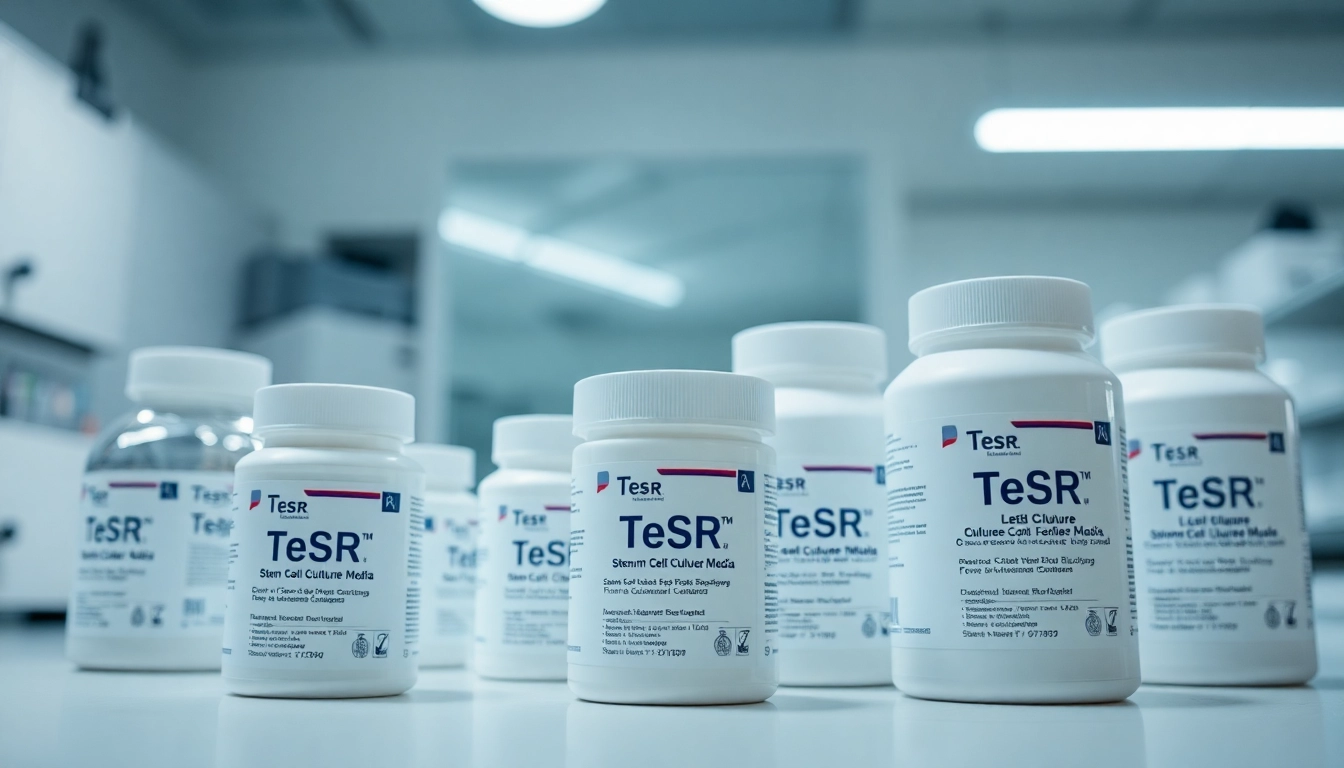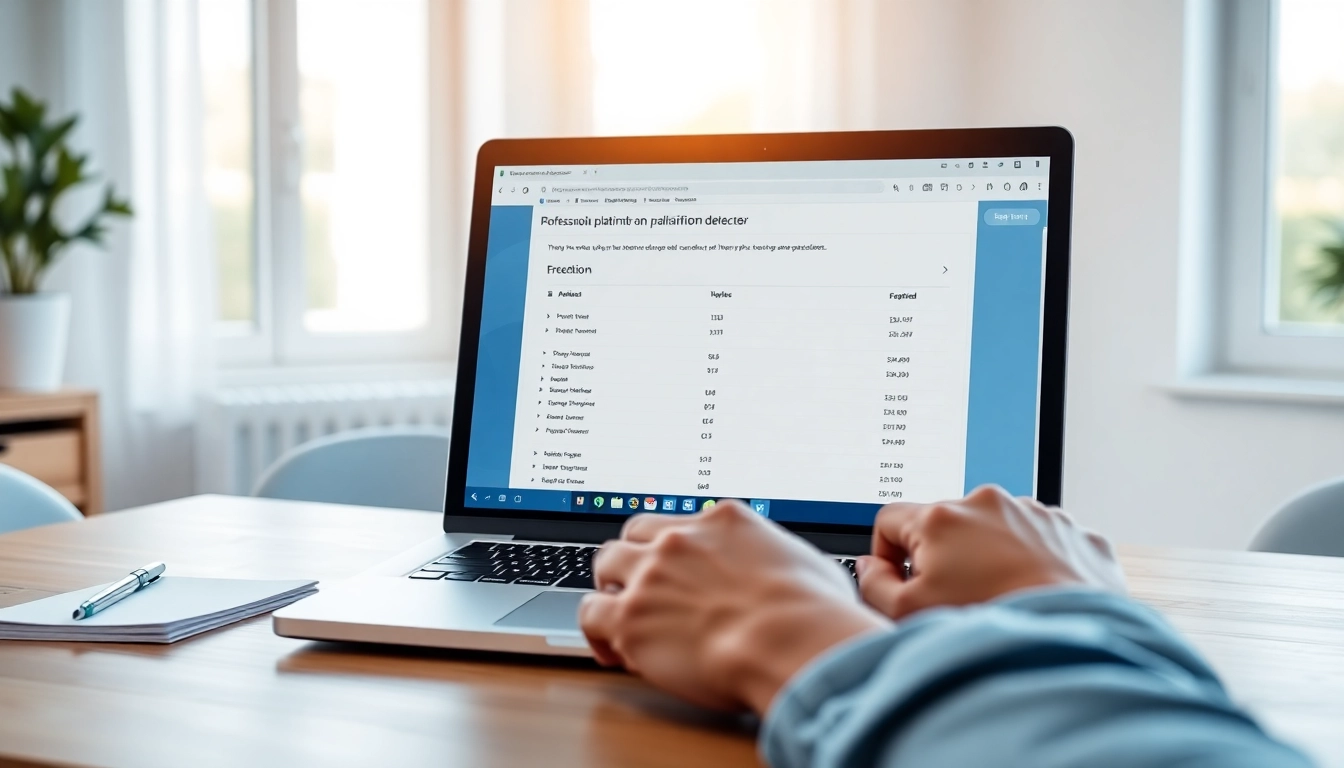Understanding Plagiarism Detectors
What is a Plagiarism Detector?
A plagiarism detector is a sophisticated tool designed to identify instances of plagiarism within a piece of written content. It operates by comparing the text against a vast database of existing works, online publications, and academic papers to check for similarities and duplicated content. The importance of these tools has surged in recent years, particularly within academic institutions where the integrity of students’ work is paramount. With the rise of digital content creation, maintaining originality has become a pressing concern, making plagiarism detectors essential for writers, educators, and researchers alike.
How Plagiarism Detectors Work
Plagiarism detectors utilize complex algorithms and databases to scan submitted text for similarities. The operational mechanism includes:
- Text Analysis: The detector breaks the text into smaller segments or phrases for analysis.
- Database Comparison: It cross-references these segments against an extensive database that includes academic papers, journals, websites, and other sources that are publicly accessible.
- Similarity Index Generation: After comparing, the tool generates a similarity index that indicates what percentage of the text matches content from other sources.
- Report Generation: Finally, the detector compiles a report detailing the instances of potential plagiarism, along with the original sources for comparison.
The Importance of Using a Plagiarism Detector
Using a plagiarism detector is vital for several reasons:
- Maintaining Academic Integrity: It helps students and educators uphold standards of originality in academic work.
- Enhancing Writing Quality: Writers can refine their content and ensure that their work is unique, which is crucial in professional settings.
- Building Credibility: Ensuring originality enhances the credibility of a writer’s work and minimizes the risk of copyright infringement claims.
- Improving Research Standards: Academic institutions increasingly require plagiarism checks to foster an environment of genuine scholarship.
Types of Plagiarism Detectors
Free vs. Paid Plagiarism Detector Tools
Plagiarism detectors can be categorized into free and paid tools:
Free Tools: These tools usually offer basic plagiarism detection features. While they can be sufficient for casual use, they may lack comprehensive databases and advanced analysis features. Examples include:
- DupliChecker – A free tool providing a straightforward interface for plagiarism detection.
- Small SEO Tools – Offers a simple plagiarism check that compares text against online sources.
Paid Tools: Subscription-based services often provide in-depth analysis, support for larger documents, extensive databases, and additional resources. Some notable paid tools include:
- Turnitin – Widely used in educational institutions for its robust database and features that assist in fostering academic integrity.
- Grammarly – Known primarily for grammar checking but includes advanced plagiarism detection.
- PapersOwl – Offers a comprehensive tool that supports multiple file formats with accurate reporting.
AI-based Plagiarism Detectors
AI-powered plagiarism detectors leverage artificial intelligence to enhance detection accuracy. These systems are designed to understand context, allowing them to identify not only verbatim copying but also paraphrased content. Features typically include:
- Context Awareness: Detects subtle plagiarism occurring through rephrased or restructured sentences.
- AI Learning: Continuously improves by learning from user input and updates in databases, ensuring that it remains effective against evolving writing styles and sources.
- Multi-Language Support: Many advanced tools can analyze texts in multiple languages, beneficial for international users.
Institutional Plagiarism Detection Systems
Educational institutions often utilize specialized plagiarism detection systems tailored to their needs. These systems provide robust features suited for educators and researchers:
- Integration with Learning Management Systems: Tools like Turnitin can seamlessly integrate with platforms such as Moodle, enabling easy submission and checks.
- Detailed Feedback for Students: Institutional tools typically provide feedback mechanisms to help students understand the areas of concern in their submissions.
- Anonymity Options: Protects students’ identities when submitting papers for analysis, fostering a safer environment for learning.
How to Choose the Right Plagiarism Detector
Factors to Consider When Selecting a Tool
Choosing the right plagiarism detector involves evaluating several key factors:
- Database Size: A larger database increases the chances of identifying potential plagiarism.
- Accuracy: Look for tools with a proven track record of accuracy in detection.
- User Experience: A straightforward interface can make the tool more accessible and easier to use.
- Reporting Features: Quality reports that clearly indicate sources and provide actionable feedback are essential.
Top Plagiarism Detector Features
When comparing different plagiarism detectors, consider these crucial features:
- Real-time Detection: Instant feedback helps users address plagiarism as they write.
- Multiple File Format Support: Ability to scan various file formats, including PDFs and Word documents.
- Detailed Similarity Reports: Comprehensive reports that highlight the matched sections and provide sources.
- Customization Options: Some tools allow users to customize the level of detection sensitivity.
Comparing User Reviews and Ratings
User reviews and ratings provide insights into the performance and effectiveness of plagiarism detectors. Consider the following:
- Reliability: High ratings often indicate that the tool consistently delivers accurate results.
- Customer Support: Positive feedback regarding customer service can be critical, especially for paid tools.
- Ease of Use: Users frequently mention the usability of a tool, which can greatly influence your choice.
Best Practices for Using Plagiarism Detectors
Integrating Detection Tools in Writing Workflows
To maximize the benefits of plagiarism detectors, integrate them into your writing process:
- Pre-Writing Checks: Use the tools before starting your draft to ensure your topic and content ideas are original.
- Continuous Checking: Regularly check portions of your text during writing to catch any accidental plagiarism.
- Final Review: Always run your completed work through a plagiarism detector before submission or publication.
Interpreting Plagiarism Reports Effectively
Understanding how to read and interpret plagiarism reports is crucial for informed decision-making:
- Percentage Matching: A high percentage indicates significant overlap; however, context is essential to interpret this data accurately.
- Source Identification: Knowing where the matches come from helps you decide whether revisions are necessary.
- Feedback Utilization: Use the feedback provided to refine your writing and improve originality.
Educating Others About Academic Integrity
Promoting awareness and understanding of plagiarism and its consequences is vital in academic settings:
- Workshops and Training: Offer sessions to educate peers about plagiarism, how to avoid it, and the use of detectors.
- Encouraging Original Writing: Advocate for a culture that values and rewards original research and writing.
- Resource Sharing: Provide access to plagiarism detection tools as part of academic resources for students.
Future of Plagiarism Detection Technology
Emerging Trends in Plagiarism Detection
The landscape of plagiarism detection is evolving, with several trends reshaping its future:
- Increased AI Integration: The use of machine learning will improve the accuracy of detecting nuanced plagiarism cases.
- Focus on Paraphrasing: Upgraded tools will increasingly target rephrased content, recognizing that plagiarism isn’t only about verbatim copying.
- Enhanced User Customization: Future tools may offer more customizable settings for users to tailor the detection process to their specific needs.
The Role of AI in Academic Honesty
As artificial intelligence continues to advance, its role in promoting academic honesty will expand:
- Intelligent Feedback Systems: AI can provide personalized feedback based on common plagiarism patterns and help guide students toward improvement.
- Adaptive Learning: Plagiarism detection tools will adapt to different writing styles and academic levels to better serve users.
- Engagement in Ethical Practices: AI can facilitate discussions and training on academic integrity to ensure students understand the implications of their work.
Potential Challenges Ahead for Plagiarism Detectors
Despite advancements, several challenges remain for plagiarism detection technologies:
- False Positives: Detection tools can sometimes incorrectly identify originality issues, which may mislead users.
- An Evolving Landscape: Rapid changes in digital content creation necessitate constant updates and improvements to detection algorithms.
- User Awareness: Not all users may understand the limitations and functionalities of the tools, leading to misinterpretation of reports.



